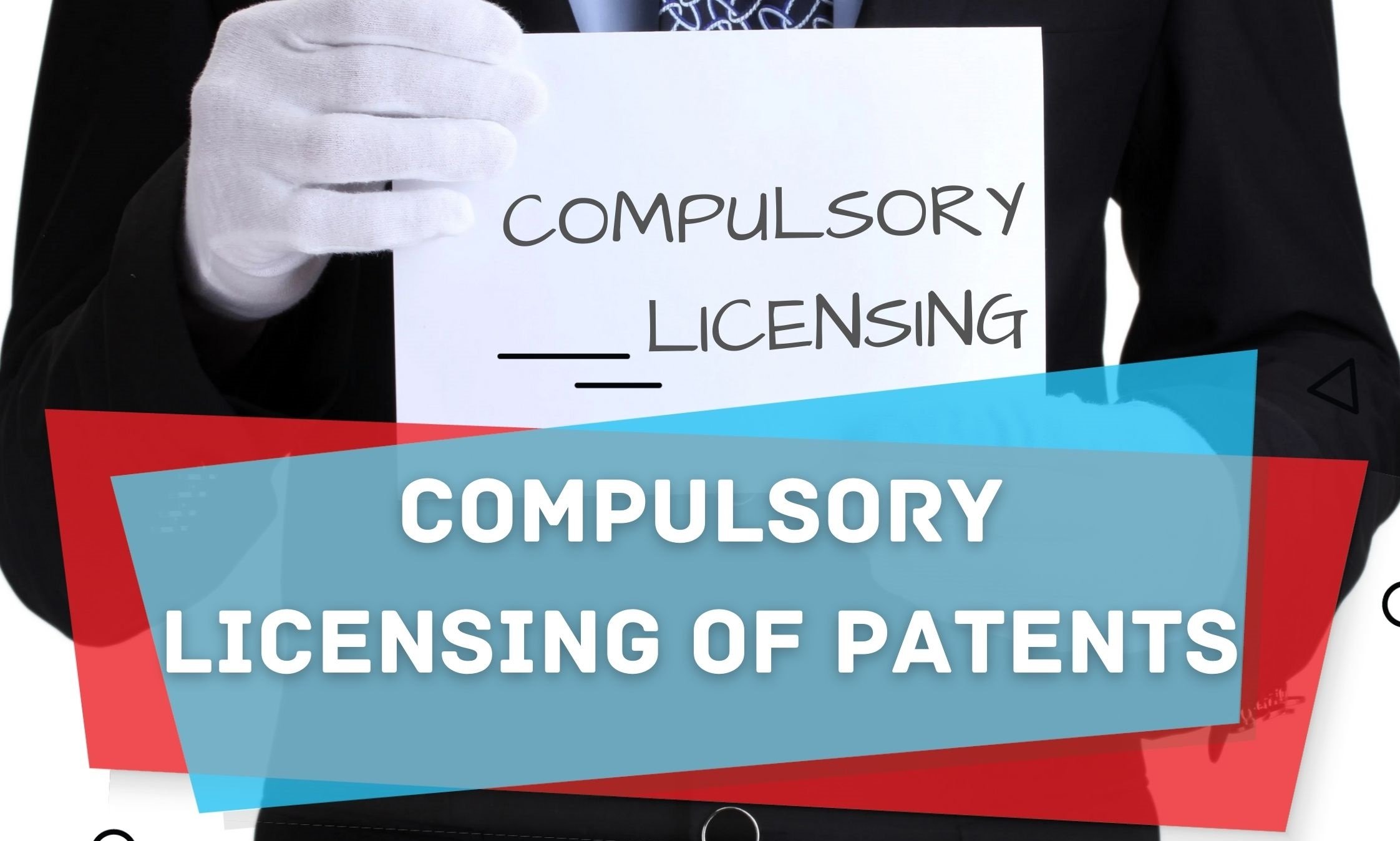COMPULSORY LICENSING OF PATENTS
compulsory licences are authorisations issued by the Government to a third party for the manufacturing, use or selling of a specific product or use of a particular method that has been patented without the patent owner's consent being required. Although this acts against the patent holder, compulsory licences are usually regarded only in such cases as national emergency and health crisis scenarios.

WHAT IS A PATENT?
WIPO defines a patent as an exclusive right given to an invention which is a product or method which, in general, provides a new way of doing things or provides a new technological solution to a problem. A patentee shall have exclusive rights for a term of 20 years in respect of his invention and may exempt others from the use of his patented product. In such conditions, however, a third party may be issued a compulsory licence to make use of a patented device. Definition of Compulsory Licensing was issued in chapter XVI of the Indian Patents Act, 1970.
TO KNOW MORE ABOUT PATENTS, WATCH THIS VIDEO -
INTRODUCTION
In 2012, when India's first Compulsory License (CL) was granted by the Patent Office to Natco for Nexavar - sorafenib tosylate, Indian patent law acquired a lot of worldwide significance. Few countries are resistant to the CL grant ruling and some are in support of it. Significantly, India has faced many obstacles in the pharmaceutical industry at the grant level of CL, primarily on intellectual property problems. In the pharmaceutical industry and in the world where high costs of life-saving medications are planned only for a few affluent patients and not for the vulnerable and needy, the award of Natco compulsory licence has brought new hope.
Simply stated, compulsory licences are authorisations issued by the Government to a third party for the manufacturing, use or selling of a specific product or use of a particular method that has been patented without the patent owner's consent being required. The rules on compulsory licencing are laid out at the international level in the Indian Patents Act, 1970 and in the TRIPS (Trade-Related Aspects of Intellectual Property Rights) Arrangement. Although this acts against the patent holder, compulsory licences are usually regarded only in such cases as national emergency and health crisis scenarios.
WHO CAN FILE FOR A COMPULSORY LICENSE?
According to Section 84 of the Patents Act, any interested person (regardless of whether he holds a patent licence or any other patent) may apply to the controller for the award of a compulsory licence within three years from the date of grant of the patent, subject to the fulfilment of any of the following conditions:
- Fair public conditions about the patented technology were not satisfied;
- The patented invention is not at a fairly reasonable price open to the public; or,
- In India, patented inventions are not used.
An interested party can file an application with the Indian patent office for a compulsory licence online or on paper, via Form 17, along with the prescribed charge. A declaration setting forth the essence of the applicant's concern, along with the facts and particulars on which the application is based, should be followed by Form 17.
INTERNATIONAL LAWS
To avoid patent infringement, compulsory licencing of a patent is provided for in Article 5 of the Paris Convention. Section A(2) of Article 5 specifies that '[e]ach nation of the Union shall have the right to take statutory steps to award compulsory licences to prevent violations which may result from the exercising of the exclusive rights granted by the patent, such as those conferred by the patent, If he 'justifies his inaction for good purposes,' the patentee will prevent the compulsory licence.' The licence is non-exclusive and non-transferable.
HOW TO SCALE YOUR BUSINESS WITH PATENTS? CLICK THIS VIDEO -
WHY IS IT GOOD TO HAVE COMPULSORY LICENSING?
In underdeveloped countries, pharmaceutical firms will be less creative and they will be relying on generic medicines. Instead of financing the Research & Development independently, which is also a very expensive thing, they would choose to receive the compulsory licence for a generic drug. Moreover, in developed nations, science-based pharmaceutical firms will not introduce a patent module, since there is often a chance of losing the patent and losing research capital.
The number of businesses making generic drugs will be expanded by compulsory licencing. The production will then go up, and the cost will go down. Innovative countries will also be required to adopt a differential price of their patent module to be able to stand on the market.
Patients are going to get medications at a considerably lower cost. Large pharmaceutical firms frequently propose plans to secure their patents in developed countries, such as universal access to medication.
CONCLUSION
The compulsory licence clause must be used judiciously since it represents an exemption and versatility to the general patent law. The clause is in the middle; neither full patent immunity is provided nor the explicit effect on research funding is denied, and the unregulated implementation of that rule will lead to international pharmaceutical corporations hesitating to introduce new medicinal goods in other countries. Consequently, if firms wish to defend their products from compulsory licencing, they must set the cost of their patented module according to the economic condition of the region.
Because of the economic situation of the majority population, India, in particular, faces a challenge. It must, on the one hand, strictly comply with international patent rights requirements and, on the other, safeguard public health.
We may argue that compulsory licencing in underdeveloped countries has now become the dream of financially challenged patients, and compulsory licencing is now one of the most controversial subjects in foreign property matters.
GROW YOUR BUSINESS 10 TIMES FASTER WITH PATENTS, WATCH THIS -
BY -ADITI GOEL












